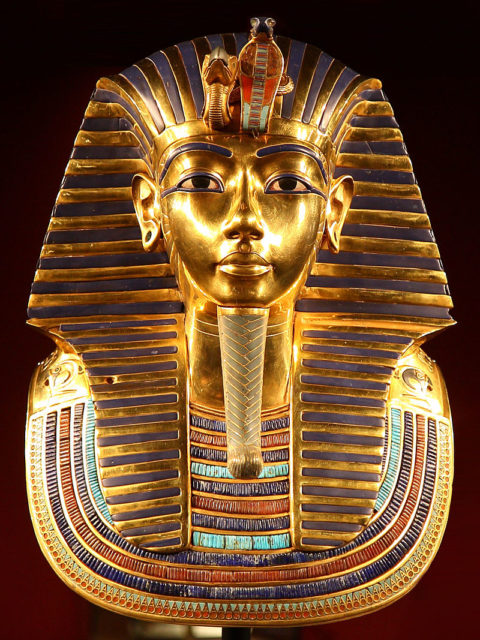Cobalt glass beads discovered in Scandinavian Bronze Age tombs reveal some iconic trade links between Egyptians and Mesopotamia 3,400-years-ago, and even show the same signs of religious rituals.
This striking revelation occurred as elegant Egyptian glass beads were found in Danish Bronze Age burials dating back to 3400 years ago.
What’s more shocking is that these glass beads came from the workshop as those that were buried with the famous boy-king Tut. This finding proves that there were established trade routes between the far north and the Levant as early as the 13th century.
During excavation across 51 burials sites inside of Denmark, 271 glass beads have been found, with the majority of them originating from Nippur, Mesopotamia, which is approximately 50 km southeast of modern-day Baghdad.

Lapis lazuli was by far heralded as the most precious gemstone in Nordic’s late Bronze Age, with blue glass easily the next best thing. In the north, the blue glass was seen as magic and truly a gem from the heavens.
At the burial site, twenty-three of the 271 jewels found in Danish Bronze Age burials, to the archaeologists’ delight, were blue. This style of blue was a rare and worshiped color during ancient times.
Danish examiners believe the blue glass beads placed in the graves had religious meaning. Also, glass and amber seem to be closely related, in the North as well as in the South. The connection of the glass and amber was not accidental, the archaeologists believe.
Specific social values would have been conveyed by wearing the two materials together. Therefore, the highest elite that controlled both the production and distribution of amber directly benefited from its export by receiving the beautiful Egyptian glass beads.
These 23 blue glass beads were thoroughly inspected using plasma-spectrometry, a famously effective method that allows scientists to compare trace elements inside of the beads without damaging them.
This examination showed that the blue beads concealed inside of woman’s grave turned out to have originated from the same glass workshop in Egypt that ornamented King Tut during his funeral in 1323 BC.
King Tut´s renowned golden deathmask comprises stripes of the same blue glass in the headdress and even in the inset of his magical beard.
One of the graves that contained the blue glass beads was that of a Bronze Age woman in Olby, Denmark. She was buried inside of an oak-style coffin wearing a religious sun disc, a smart string skirt decorated with chimes, small bronze tubes, and an amber bracelet. In a different grave, another blue bead was found embedded inside a necklace, accompanied by four amber stones.
These glass beads were an extravagant beautification in ancient Egypt because the beautiful stone was scarce, except in the graves of the elite where the assortment was nothing but choice.
It may seem incomprehensible how cobalt beads fit for kings could end up in Nordic burials, but experts speculate that the two ancient civilizations traded the dark blue glass for amber.
Denmark was always known for being rich in amber and the closest abundant supplier for many countries at the time. Due to this, amber became the primary exchange item from the North.

The Egyptian and Mesopotamian glass beads discovered in the graves in Denmark indicate that trade was prospering 3000 years ago, and conversely, Nordic amber was established as far south as Greece and Syria. The main reason for the high stake exchanges between glass beads and amber was directly due to the fact that these “gems” traveled along the same trading roads.
The glass originated in ancient Mesopotamia and Egypt, so it was pushed north, while the amber was valuable enough to reach the Mediterranean and was speculated to have been exchanged across the coast.
Though the glass exchange halted around the 1170s BC, trading systems in the Mediterranean completely collapsed around 1200 BC. This was thought to have occurred during the war and economic recession. This collapse can has been traced back to the Nordic burials, as significantly fewer glass beads seem to have reached the north.
Renowned experts Varberg and Flemming have faith that the glass and amber beads may have common symbolic or magical values that made it beneficial to carry them together.
“If we allow ourselves to consider such mythological and connected magical properties of glass and amber in the Bronze Age North, then it should not be difficult to recognize the magical values of these materials being enhanced when carried closely together,” states Flemming.
This trade of glass and stone shows us how cherished these jewels were across the world in the 13th century, and it’s a huge indication that human civilization was advanced both geologically and economically even in the 13th century.
